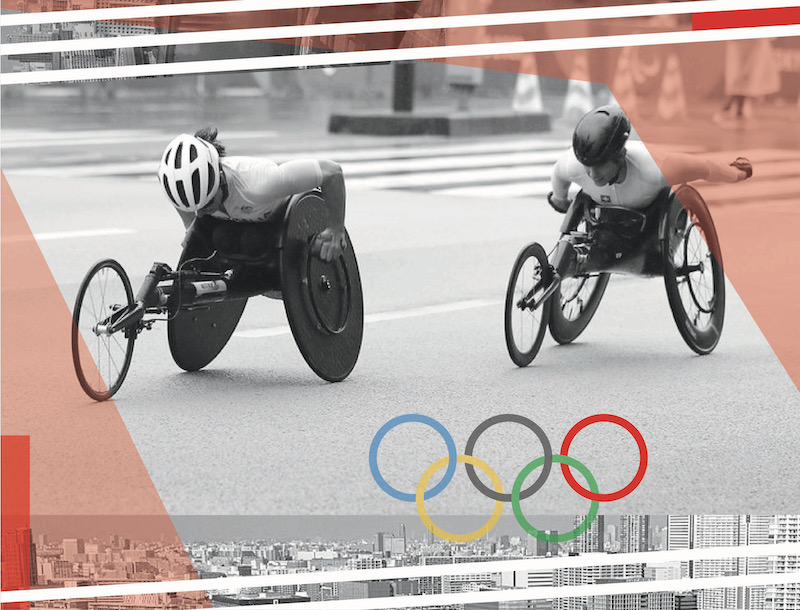
Andressa Fontes Guimarães-Mataruna
Ph.D. Candidate in Journalism at University of Beira do Interior. She has MA International Relation – Peacebuilding from Coventry University, UK. She graduated in Science of Communication from UNESA, Brazil.
E-mail: andressa.mataruna@ubi.pt

Dr Adriano Lopes de Souza
Lecturer at the Physical Education Department, Federal University of Tocantins, Brazil. He specializes in the field of sociocultural studies of sports, particularly the Modern Olympic Movement and its Games.
E-mail: adrianolopes_10@hotmail.com

Dr Renan Petersen-Wagner
Senior Lecturer in Sport Business and Marketing at the Carnegie School of Sport and Researcher in the Centre for Social Justice in Sport and Society at Leeds Beckett University.
Twitter: @renanpwagner

Dr Doiara Silva dos Santos
Graduated in Western University, Canada. Currently serving as a Lecturer at the Physical Education Department, Federal University of Viçosa, Brazil. She specializes in the field of sociocultural studies of sports, particularly the Modern Olympic Movement and its Games
E-mail: santosdoiara@ufv.br

Dr Leonardo José Mataruna-Dos-Santos
Associate Professor in the Department of Sport Management at the Faculty of Management – Canadian University of Dubai. He is an Associate Research at Coventry University and UFRJ-PACC. He is also member of STRADEOS research group of University of Lille and member of WADA Education Committee.
E-mail: leonardo.mataruna@cud.ac.ae

Prof. Otávio Guimarães Tavares da Silva
Professor at the Federal University of Espírito Santo, Brazil. Director of the Centre of Physical Education and Sport and Leader of ARETE – Centre of Olympic Studies. He researches in the field of sociocultural studies of sports, with special interest in the Modern Olympic Movement.
E-mail: otavio.silva@ufes.br

Section 5: Politics of Sport
- Despite “Gender Equal Olympics,” focus still on what women are wearing
- The sacred space of the Olympics
- At Tokyo Games, athlete activism takes front row seat despite IOC’s attempts to silence athletes
- Forced hijab and female athletes in postrevolutionary Iran
- Pay equity and the Tokyo 2020 Olympics
- We want reform
- The revolt of the Black athlete continues
- The colonization of the athletic body
- Anti-Olympics activism
- Rooting for U.S. Olympians: Patriotism or polarization?
- The new kids on the block: Action sports at the Tokyo Olympic Games
- Black women and Tokyo 2020 games: a continued legacy of racial insensitivity and exclusion
- Softball’s field of Olympic dreams
- Equal remuneration for a Paralympian
- Is there space on the podium for us all?
- The Tokyo Paralympics as a platform for change? Falling well short of sport and media ‘opportunities for all’
- Tokyo 2020 Paralympics: inspirations and legacies
- What social media outrage about Sha’Carri Richardson’s suspension could mean for the future of anti-doping policies
- Now you see them, now you don’t: Absent nations at Tokyo Paralympic Games
- Will #WeThe85 finally include #WeThe15 as a legacy of Tokyo 2020?
- WeThe15 shines a spotlight on disability activism
- Activism starts with representation: IPC Section 2.2 and the Paralympics as a platform for social justice
- In search of voice: behind the remarkable lack of protest at the Tokyo Paralympics
The Olympic Games opening ceremonies are cultural performances that can be understood as a ritual and a spectacle. This performance is characterized by articulating universal messages and values with local cultural meanings. As a ritual, it marks the beginning of a global event and transmits through its symbols (athletes, flag, anthem, oaths and pyre) a set of values of universal aspiration. As a spectacle, it celebrates the culture of the country that organizes the Games. These ceremonies are means of cultural communication and a media spectacle at same time.
The Olympic ceremonies are shaped to meet the television language and to excite a large audience. This has several consequences. The media itself ‘constructs’ the ceremonies through images and texts that do not portray it in its entirety, but cut and redefine it in some way.
What the public sees at home is not the same event that is seen in the sports arena. You often have access at home to details that are impossible to perceive in the vast space of the stadium. On the hand, the local ambiance cannot be captured by camera lenses. However, if the images provided to the world are the same for everyone, the way in which the ceremony is narrated depends on the emphases, comments and stories that each national television gives according to local meaning. It causes the original content of the ceremony to be filtered by national lenses, and may generate messages in some way different. Let’s take as an example some notes on how televisions from Brazil, UK, Portugal and Iran broadcast the opening ceremony of the Tokyo 2020 Games on July 23rd.
In respect of the British context, BBC’s broadcasting of the opening ceremony had its mission of “to act in the public interest, serving all audiences through the provision of impartial, high-quality and distinctive output and services which inform, educate and entertain” (BBC, 2021, emphases added) clearly apparent. During the ‘artistic programme’ part of the ceremony (see IOC, 2021) both commentators uttered mostly informative content that sought to explain to the British audience what was taking place. Meanwhile, during ‘the parade of the athletes’ part of the ceremony, comments focused more on the educative aspect of BBC’s mission by providing content in terms of facts and figures of the different countries entering the Tokyo Olympic Stadium. This educative content was not only in respect of current and historical general sporting knowledge, but also more trivia type of knowledge in terms of history, geography and demography of all the different nations.
In Brazil, the broadcast, made by a commercial broadcaster, was fundamentally focused on the search for emotion, identification and entertainment. Comments during the ‘artistic programme’ emphasized the problems faced by athletes and by the organization of the Games due to the COVID-19 pandemic that transformed Tokyo 2020 into the “Games of overcoming difficulties” or the “Games of hope.” The appeal to emotion was also present when the presence of a black Italian woman, daughter of immigrants, among the Olympic flag bearers also turned Tokyo into the “Games of inclusion”. On the other hand, the ‘parade of the athletes’ was filled with many comments about the chances of Brazilian athletes combined with four inserts for live interviews with some athletes who were in Olympic Village. In this part of the ceremony, very little was said about the other participating countries.
In Portugal, the RTP television, a public service broadcasting, focused the opening ceremony with several comments about the Covid-19. The participation of health professionals in the event was very well received by the Portuguese media, which valued the conduction of the Olympic fire by doctors and nurses. There were also comments about the difficulties of athletes who trained alone and at home to participate in the event. The ceremony with minimalist characteristics, according to the Portuguese press, revealed symbols that describe the pandemic moment as the artistic elements, the absence of the public and the participation of athletes wearing masks. In this context, athletes from countries that did not wear masks were harshly criticized. As well as the protests in the streets of Tokyo, they were also evidenced by Portuguese journalists who emphasized that part of the Japanese population was against the holding of the event.
About the coverage in Iran it was marked by a delay for filtering the images. Aspects that violate culture and religion, such as the display of the semi-naked bodies of athletes from Vanuatu or images that symbolize gender equity such as the pairs of flag bearers did not appear in this country’s coverage on the IRIB channel VARZESH (national sports TV channel in Iran in Persian Language). During the athletes’ parade, Abbas Jadidi, an wrestler athlete who had participated in the Olympics were invited to talk about his experiences in the Olympics interrupting the images of the ceremony.
As we can see, the same ceremony received different emphases according to different interests and cultural demands, becoming rituals that were somehow equally different. This is not necessarily bad, nor does it make the media a villain for intercultural communication. It’s just a less visible or negligible part of the system. However, one question remains: How many Olympic ceremonies took place in Tokyo on July 23, 2020?

